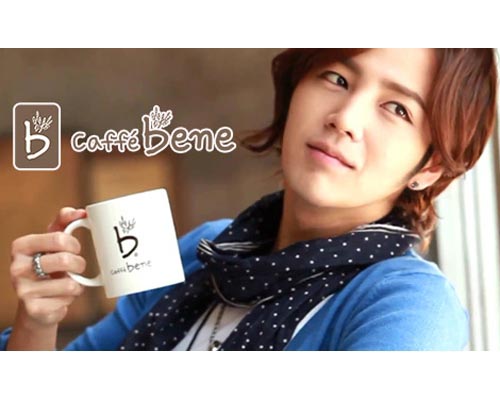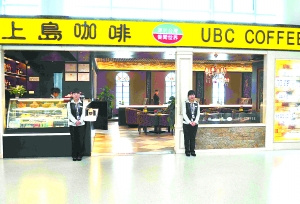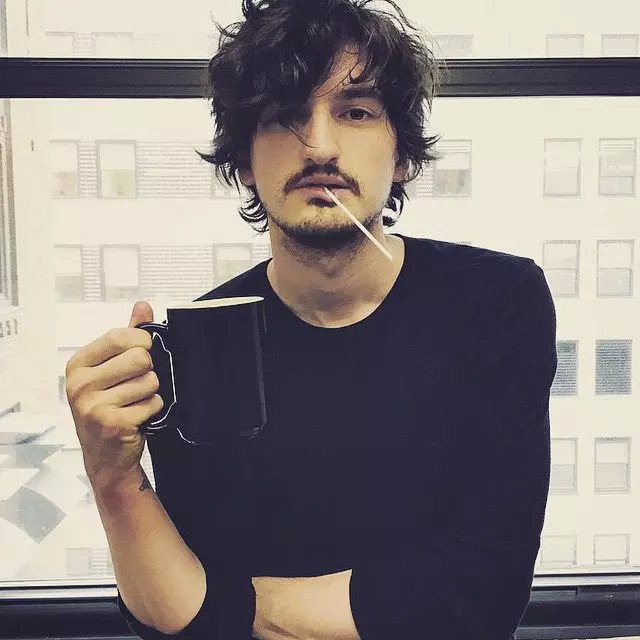[analysis] imitating the high risk of "Brother": is Hanfeng Cafe really suitable for you?

Analysis.
Korean coffee has developed rapidly in recent years, in addition to well-known brands such as diffuse coffee, coffee and other well-known brands, shanzhai brands are also emerging one after another, blooming everywhere.
There are still many problems behind the popularity of Korean coffee, the cost is high, the pressure is high, and the core competitiveness needs to be further cultivated. What is the current market environment for Korean coffee? Where is the bottleneck? What are the prospects? If you want to open a Korean coffee shop, you should think about it in advance.
Li Qiang, the special author of the internal reference of the catering boss, was sent in Beijing.
First, the authentic Korean coffee is proud and strong, and knockoffs blossom everywhere.
With the exemplary role of excellent Korean coffee such as Man Coffee, Coffee with you and Zoo Coffee, there are many fake Korean coffee brands on the market. These "counterfeits", which were established in less than two years, also quickly won the favor of the market.
Why can shanzhai be so popular? Because orthodox Korean coffee brands are generally proud and strong in store expansion, there are many "overlord clauses".
Korean coffee brands are generally expensive to join, and most of them also require holding franchisees, such as Man Coffee, which requires franchisees to have the strength to develop multiple stores.
In this way, it blocks many coffee investors who want to invest in Korean coffee brands, but do not have the financial strength, so these fake Korean coffee brands emerge as the times require.
They imitate the same old elm furniture tables and chairs as Man Coffee, the same decoration style, the same product model, the same empty space, the same persimmon trees, and even the same bears!
The number of these copycat brands is no less than that of authentic Korean coffee brands.
Second, Korean coffee "unifies China"? It's hard!
The emergence of many copycat brands does show that Korean coffee brands are popular all over the country, but it is undeniable that Korean coffee brands still lack real core competitiveness in the Chinese market in the process of rapid development.
China has a huge land area and great differences in regional consumption habits. I often say that the consumption habits of Beijingers may never be the same as those of Sichuan people. In South Korea, Korean coffee brands, which have many competitive advantages over Starbucks, may not be popular in China.
Quite simply, the Chinese market is too big. In South Korea, there are never as many dialects as China, with such complex eating habits.
Coffee culture in Europe and the United States is not so easy to assimilate the Chinese coffee market. It is too early and difficult to unify China with the attack of Korean coffee culture.
Third, Korean "little tricks" are not easy to work for a long time.
The core competitiveness of Korean coffee in South Korea is relative to Starbucks and other European and American cafes, such as a more comfortable environment and more leisure, especially for female customers. Delicate Korean coffee makers also set up sweeter drinks suitable for women and bread pastries baked on the spot.
However, these "tricks" can only work in China in the short term.
Because the environmental atmosphere of the cafe can be achieved through designers, Chinese coffee investors, who are not short of money, can hire excellent designers to create a more comfortable and leisure consumption environment than orthodox Korean coffee. Those so-called muffin toast or sparkling water, matcha latte, is not really a novel thing.
Nowadays, with the increasing flow of online information, it is not difficult for us to obtain these product formulations, not to mention that in the past two years when Korean coffee has expanded rapidly, we have not known how many employees have flowed out and the so-called product formulations circulated through various channels, true or false.
Fourth-and third-tier cities, please carefully introduce Korean cafes
In the final analysis, the product structure of Korean coffee is too simple for Chinese people who have more diversified consumption habits and eating habits.
The product structure of "coffee + sparkling water + ice cream + ice cream + muffins + Toast" has a per capita consumption of 50 or 60 yuan. One or two hundred people enter the store a day, and the turnover is less than 10,000 yuan. This kind of operating cost is a bit difficult for those third-and fourth-tier cities that do not have enough coffee shops.
If the operating area is too large, the rent pressure is too large, or the investment is too high, not only the daily operating pressure is great, but also the capital recovery period will grow a lot.
Li Qiang is the author of books "want to open a coffee shop-1" and "just want to open a coffee shop-2".
Editor: Mr. Sheep with Internal reference
Important Notice :
前街咖啡 FrontStreet Coffee has moved to new addredd:
FrontStreet Coffee Address: 315,Donghua East Road,GuangZhou
Tel:020 38364473
- Prev

Shareholders do things in their own way. Shangdao Coffee is badly hit. The prospect is worrying.
The Shangdao coffee shop on the market shows a completely different style. Shangdao coffee is suffering from the double attack of Shangdao coffee brands and other coffee brands. It is understood that the responsible shareholders in eight regions are not satisfied with the current situation of regional expansion and have promoted new coffee brands to expand across the country. Franchisees continue to lose money and give up Shangdao brand to fend for themselves. Shangdao Coffee not only faces Starbucks
- Next

The coffee man who is the most charming and detonates the moments when men drink coffee.
Instagram has always been a concentration camp for male gods, and the stylish men with the smell of their neighbors are even more attractive than the stars. And the hottest topic in the last two days is undoubtedly MENCOFFEE, or literary or avant-garde, or handsome or sexy male gods perform their coffee moment, almost have the feeling of melting heart. After all, gentle men and warm coffee
Related
- Being chased out of the rain in front of Starbucks?! Store: Sheltering from rain under umbrellas poses a safety hazard
- The white moonlight has changed?! Lucky launches "Big Winter Pear American"
- Hand-brewed coffee three-stage method, high-sweet and universal brewing method to share! What does the high sweet water level of hand-brewed coffee mean?
- What is the difference between raw, refined and full espresso coffee? How to extract espresso and taste good?
- A complete list of coffee bean names and their meanings! What is Yejia Shefi coffee? Where is Mantelin coffee?
- What grade does Arida Manor Kaduai coffee beans belong to? What treatment is Arida ASD slow anaerobic sun exposure?
- The milk tea cup becomes smaller?! Overlord Tea Girl launches a new "Return to Yunnan" series
- Accused of selling counterfeit and high-priced coffee beans! Well-known boutique coffee brand "Oukelao" bowed and apologized!
- How to make espresso dumplings? Can I eat coffee and glutinous rice balls together?
- Save the unformed and stagnant powder cakes in one second! What is the problem with stagnant water in the powder bowl of the espresso machine?

